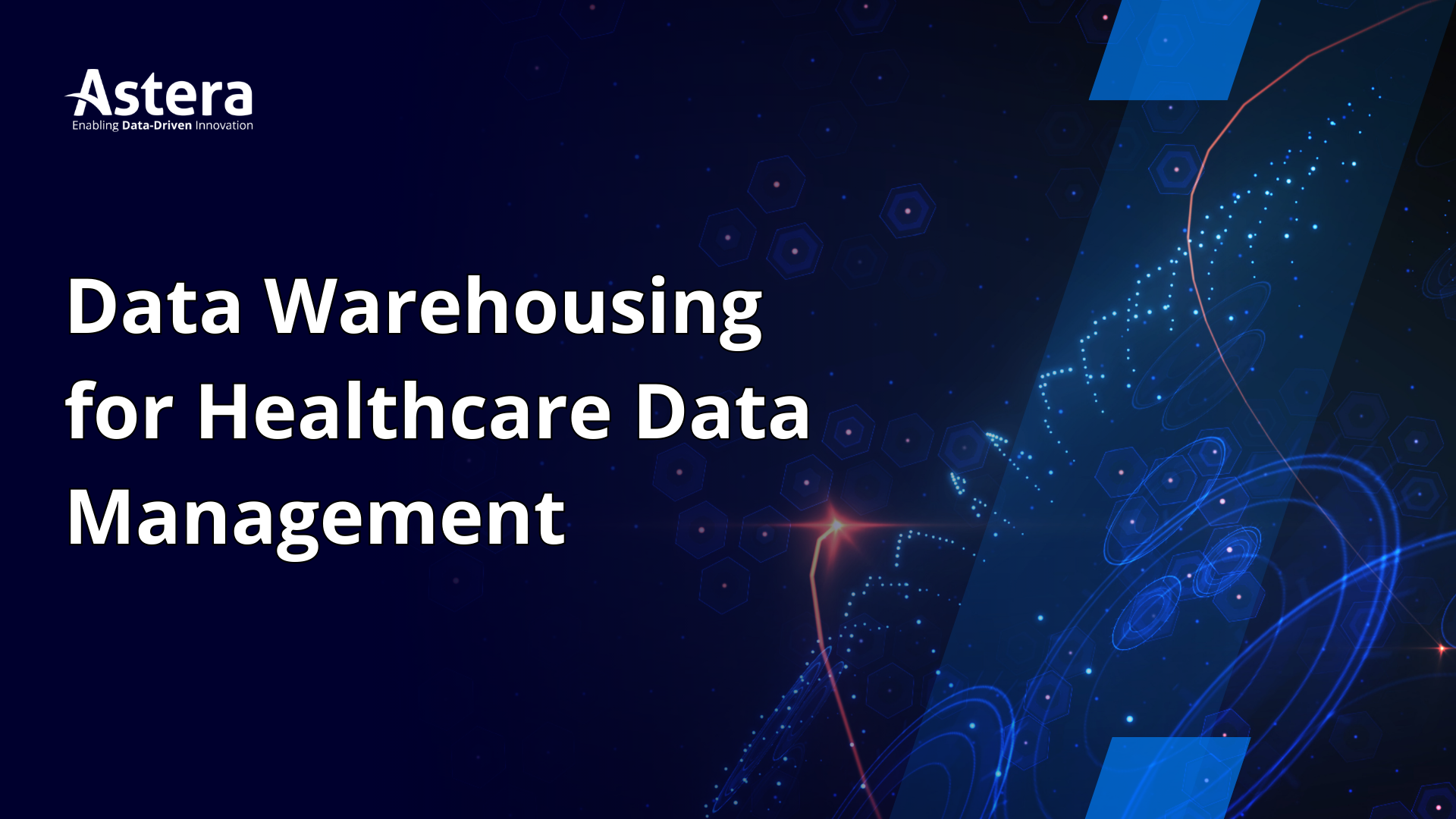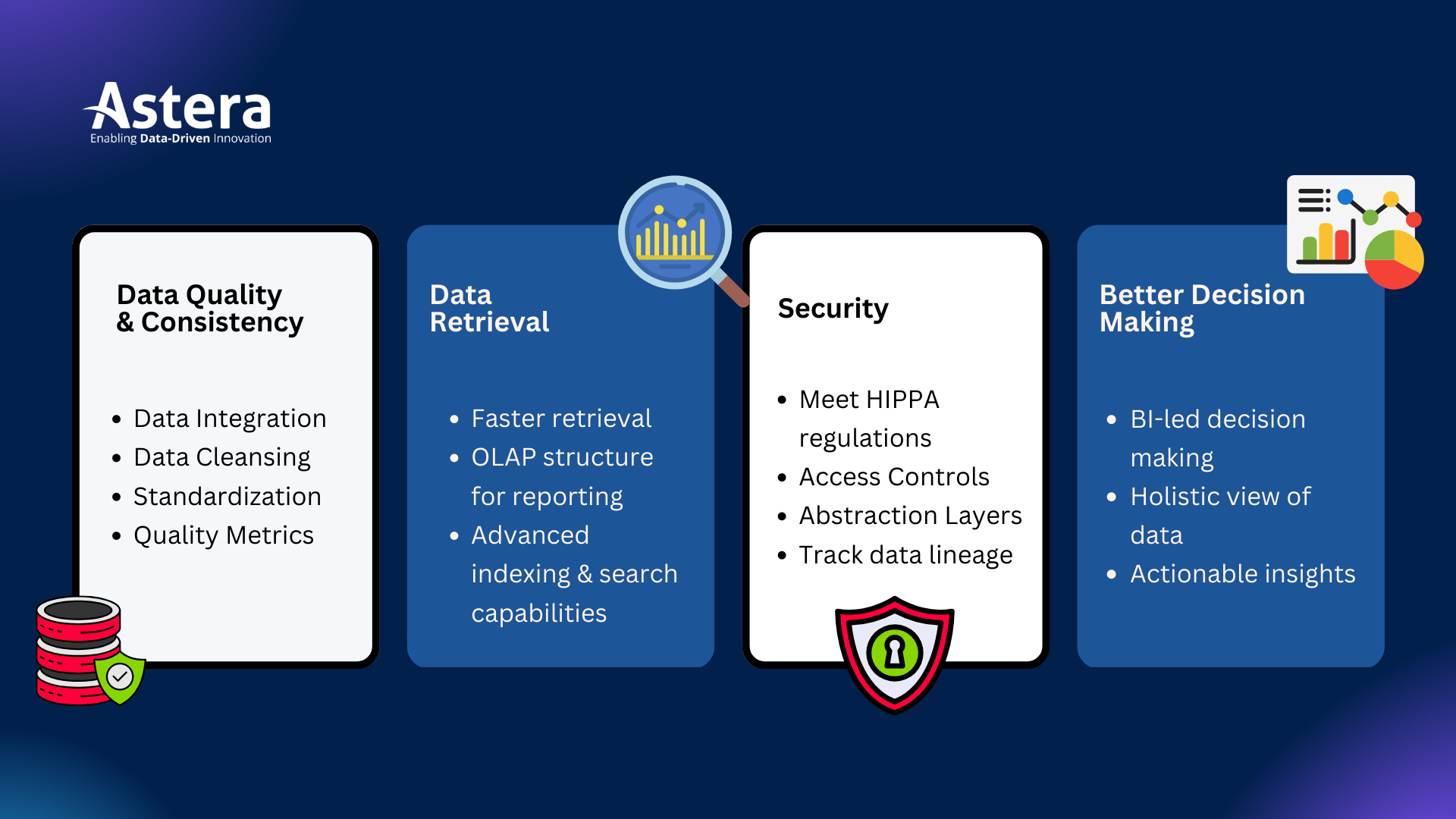In the world of medical services, large volumes of healthcare data are generated every day. Currently, around 30% of the world’s data is produced by the healthcare industry and this percentage is expected to reach 35% by 2025.
The sheer amount of health-related data presents countless opportunities. Healthcare providers are now able to take efficient, data-driven decisions to improve patient care and optimize their own operations. However, managing reams of data—coming from disparate sources such as electronic and medical health records (EHRs/MHRs), CRMs, insurance claims, and health-tracking apps—and deriving meaningful insights is an overwhelming task. This is where healthcare data management comes in.
What is Healthcare Data Management?
Data management in healthcare refers to the processes involved in the collection, organization, storage, analysis, and maintenance of healthcare-related data. Given the critical nature of medical data, there are several factors to be considered for its management. For example, healthcare companies must ensure that the data collected is accurate, cleansed, complete, and accessible to authorized stakeholders when needed. Additionally, the critical patient data needs to be stored in a secure manner that complies with privacy regulations e.g., HIPPA.

Healthcare Data Management through Enterprise Data Warehousing
Healthcare data management starts with the extraction of data from various sources or existing unstructured data storages, followed by data validation and cleansing to ascertain accuracy and quality. The next step is transformation. Here, the data is transformed into a structured format which is suitable for analysis and storage.
The data is then loaded into centralized repositories, e.g., relational databases or warehouses, in a secure and accessible manner. Finally, the stored data is retrieved at optimal speeds to support efficient analysis and decision-making.
Essentially, a data warehouse also acts as a centralized database for storing structured, analysis-ready data and giving a holistic view of this data to decision-makers. A robust data warehouse architecture does everything in data management—including ETL (extract, transform, load)—while ensuring data quality, consistency, speedy retrieval, and enhanced security at all times.
Improving Data Quality and Consistency
Quality is essential in the realm of data management. With healthcare organizations relying on data for predicting future patient outcomes, prescribing better treatment, or managing claims, you need to make sure that the data being used is accurate and reliable.
There are several ways that a data warehousing tool—e.g., the Astera DW Builder—helps with maintaining consistency and quality.
- Integrated data: A data warehouse naturally integrates data coming from disparate sources which are otherwise siloed and fragmented. By bringing together this data, from sources such as CRMs, medical records, etc. and storing them in a single, standardized format ensures consistency and accuracy.
- Data Cleansing: Healthcare data is often messy, with missing, inconsistent, or duplicate records. This is more common when you’re bringing in data from multiple sources around same objects e.g., patients. Here, a data warehouse performs data cleansing through transformations and removes all errors and inconsistencies.
- Standardization: While healthcare data often uses different terminologies and coding systems within each source system, a healthcare data warehouse standardizes these formats, ensuring consistency and seamless exchange across diverse data points. SNOMED-CT, FHIR, or ICD-10 are few common medical data standards that can be used in data warehousing.
- Data Quality Metrics: healthcare data warehouses can establish data quality metrics to measure quality and consistency such as completeness, accuracy, and timeliness. These metrics can then be used to monitor and improve data quality.
Besides ensuring data quality and consistency, the warehouse also improves the speed of data retrieval for enhanced and timely BI reporting.
Faster Data Retrieval
A data warehouse is designed to store large volumes of data from different sources in a single location, making it easy for healthcare organizations to access and retrieve the data they need quickly. Moreover, it uses Online Analytical Processing (OLAP) to organize data in a way that allows for faster and efficient data retrieval.
Data warehousing also utilizes advanced indexing and search capabilities, which allows for rapid retrieval of specific data points or sets of data. Additionally, using warehouses for health data management helps reduce the need for repetitive data entry or manual data aggregation, which can save time and reduce the risk of errors.
Finally, faster data retrieval holds numerous benefits for organizations engaged in healthcare analytics. For example, by accessing relevant data at the right time, providers can improve patient outcomes through timely treatment, reduce operational costs by focusing more on decision-making, and increase customer satisfaction.
Enhance Data Security and Privacy
Given the sensitivity of healthcare data, and prevailing privacy laws, maintaining data privacy is crucial for any data management strategy. In 2020 alone, healthcare data breaches in the U.S. reached 599, seeing a 55% increase from 2019. However, a powerful data warehousing tool can help establish a secure environment for storing critical data.
Let’s see how?
Firstly, within a data warehousing tool, we can use separate data models to create abstraction layers between original databases and reporting layers. Here, the users of reporting layers would not be able to make changes to original databases.
Secondly, we can define access controls within the data warehouse, allowing only authorized doctors, analysts, and decision makers to use our warehouse or data marts. Limited permission access and proactive management allow us to monitor healthcare data and ensure that it doesn’t fall into wrong hands.
Lastly, a versatile data warehouse can use techniques, such as data vault modeling or history maintenance through slowly changing dimensions, to track and audit any changes in data. This allows for complete control over data security, making compliance with HIPPA regulations much more convenient.
Better Decision Making through Healthcare Analytics
Data warehouses support decision making through business intelligence initiatives. They do so by leveraging data to provide comprehensive patient information, identify patterns and trends, improve clinical performance, and supporting value-based care initiatives.
By collecting, storing, and integrating data from various sources, the data warehouse provides a holistic view of patient data. Analytics tools are then used to analyze this data and provide actionable insights to providers. Moreover, the data warehouse models data in a way that supports specific analytics use cases.
For example, using healthcare analytics with a data warehouse, we can identify patterns and trends in patient data, such as high-risk patient groups, common medical conditions, and treatment outcomes. Additionally, we can forecast the healthcare needs of an individual patient or entire populations and optimize health facilities accordingly.

Conclusion
For a holistic healthcare data management strategy, it is crucial to have a data warehouse that ascertains data quality and consistency, improves data access, ensures healthcare data security, and allows for reliable, data-driven decision making. And this is where the Astera DW Builder comes in.
As a robust data warehouse automation tool, it offers a cost-effective way of delivering a robust data warehouse architecture. Equipped with in-depth pipeline automation, versatile data modeler, a code-free environment, intelligent integration capabilities, Astera DW Builder simplifies complex healthcare data warehousing processes. Learn more about how to kickstart your healthcare data management strategy today with Astera DW Builder.





